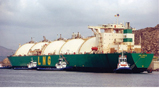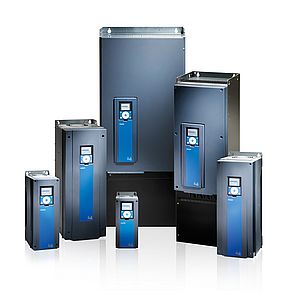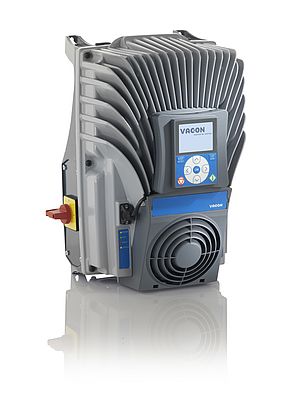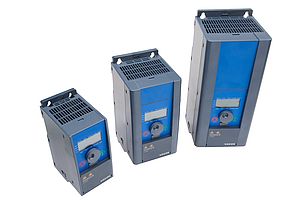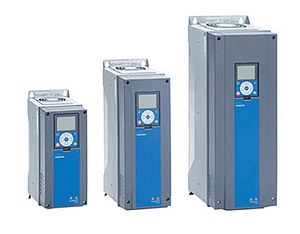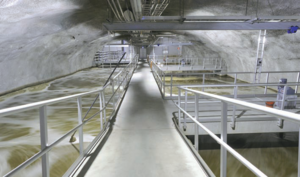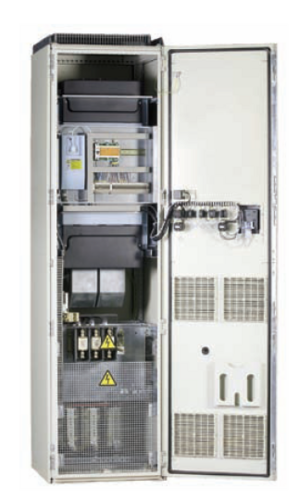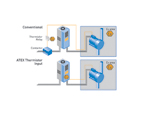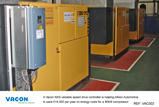An 800 kW drive from Vacon, a global leader in AC drive technology, is making the 70,000 tonne liquid natural gas transport ship LNG Abuja much easier to manoeuvre, particularly when it is in port. The drive, which was fitted and commissioned by marine power plant expert Wartsila Automation of Montrose, Scotland, is used in conjunction with the vessel's bow thrusters.
The bow thrusters greatly enhance the manoeuvrability of the huge vessel but, before the modifications were carried out by Wartsila, they had one especially inconvenient shortcoming. It was not possible to start the 800 kW motors used to power the thrusters unless the ship's main generators were operating, which meant the vessels turbines had to be running.
The bow thrusters represents a very large electrical and mechanical load to the vessel's power network and is remote from the main switchboard of the vessel. Over the years, starting the huge thrusters represents a significant mechanical load to the generators and turbines, which increases wear to bearings and mechanical components, as well as producing a very significant voltage drop on the network.
On investigating this problem, engineers from Wartsila discovered that the ship had auxiliary generators with sufficient output to power the bow thruster drive motors while they were running, but that these generators could not supply the much larger current needed to start the motors.
At that time, the motors were equipped with conventional electromechanical star-delta starters that had an initial inrush of around 300% of the motor's running current, and which also generated another large current peak during the star to delta transition.
The Wartsila engineers knew that a variable speed drive would allow much more controlled starting, with an inrush current limited to little more than the normal running current of the motors.
After carrying out a careful technical evaluation, they found that Vacon offered a particularly attractive combination of price and performance for the large 800 kW that was needed forthis application. Further, the Vacon drive offered a synchronisation facility that would make it easy to bypass when the bow thruster motors reached full speed.
The LNG Abuja has two bow thruster motors mounted on a common shaft. The variable speed drive is used to provide controlled acceleration for one of these, in such a way that the maximum current demand never exceeds 110% of the motor's normal running current - well within the capacity of the ship's auxiliary generators.
When the motor reaches full speed, as confirmed by the synchronisation facility built into the drive, a contactor closes to bypass the drive and connect the motor directly to the supply. This arrangement means that no special provision has to be made for cooling the drive,as it is only ever in use for short periods.
With the bow thruster system running under the power of one motor, the second motor can then also be switched directly onto the supply. Since this motor, mounted on a common shaft with the first, is already rotating at close to full speed, this switching operation produces only a minor current peak.
''The versatility and performance of the Vacon drives allowed us to offer a very convenient and cost effective solution for the operators of the LNG Abuja,'' said Ian Gordon of Wartsila. ''The results are excellent. The bow thrusters can now be used whenever they are needed, and even started at short notice for maintenance operations, without having to worry about whether the main turbines are running. That's a big benefit for the ship's operators, and it has been delivered at a very modest cost.''


